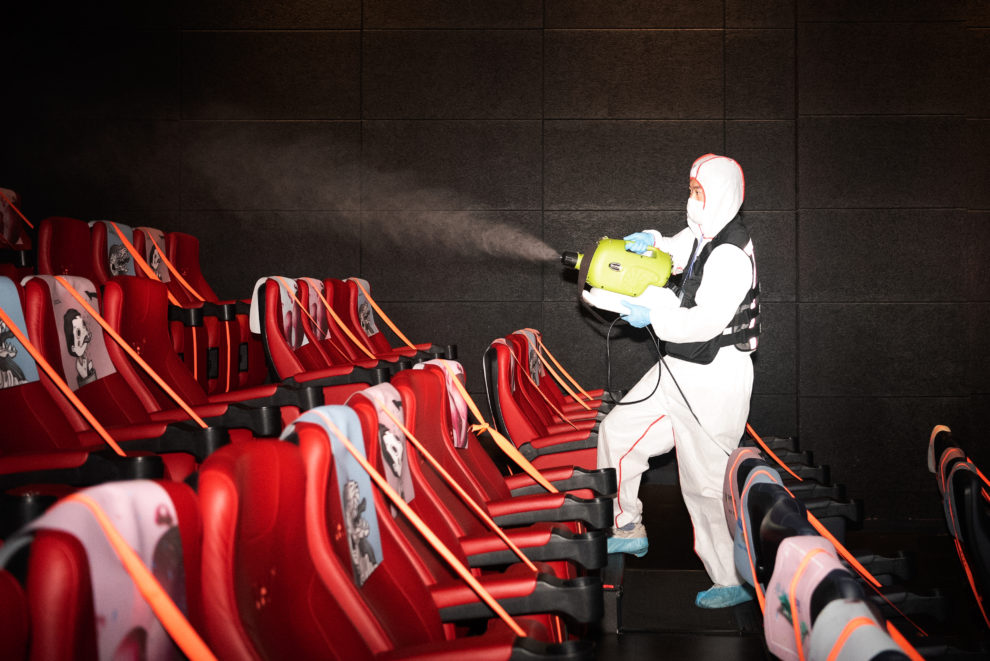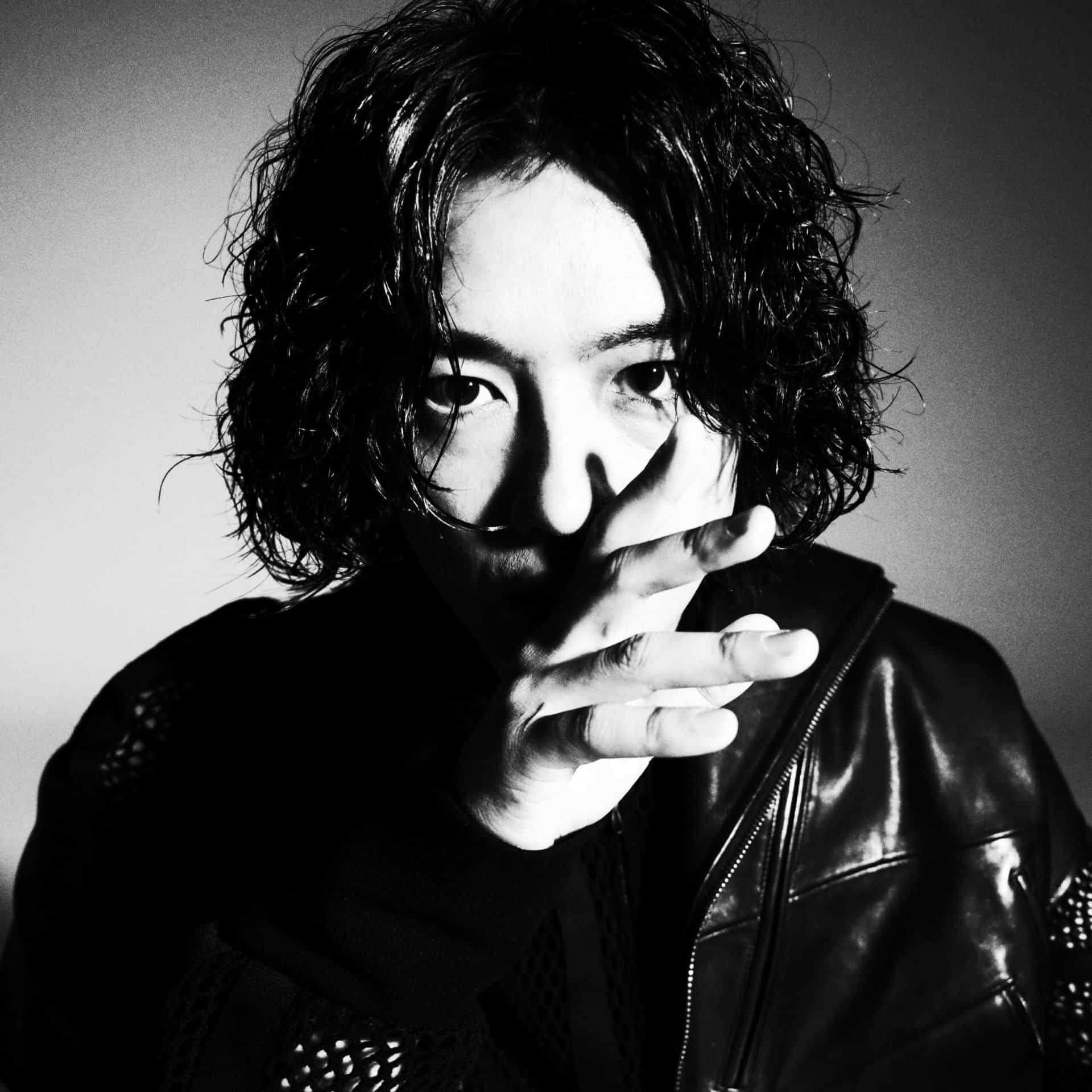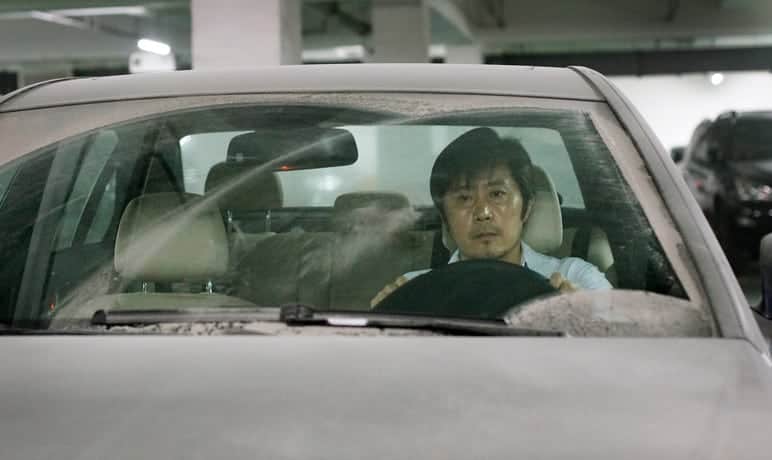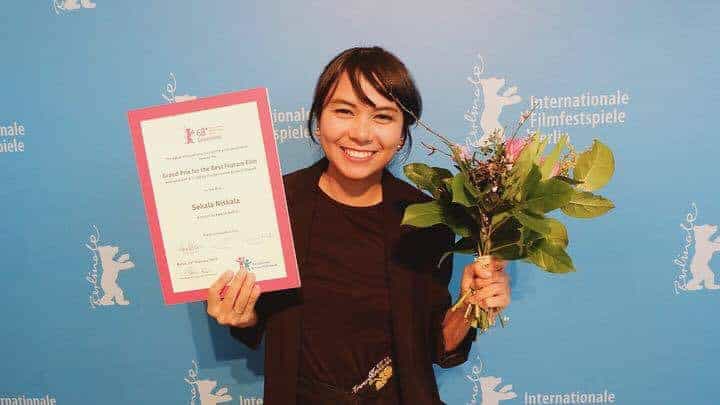(Above): One of the BIFAN staff masked up and sanitizing the movie theater. Photograph courtesy to Jin Park.
As the fall looms closer and COVID-19 fears still hang in the air, more and more European A-list film festivals — like Venice and San Sebastian — are suggesting in-person alternatives to the online fests of the spring. In South Korea, Bucheon International Fantastic FIlm Festival (BIFAN) took a different approach. Instead of choosing just “online” or “face-to-face” formats, BIFAN 2020 laid out a prototype with the best of both worlds, launching the world's first fully hybrid film festival from July 9-16.
As one of the press members at this year's BIFAN, Asian Movie Pulse checked out a blueprint of the COVID-19 festival experience. In addition to some of the our own observations, we talked to BIFAN programmer Jin Park for filling us in on the behind-the-scenes details.
What was online?
Almost everything.
Of the 173 films in the official selection, a good 68 of them were playable on-demand on WATCHA, a domestic streaming platform. For BIFAN's audience of mostly 20-40-somes, reception has been largely mixed. However, viewership climbed, with more people accessing online features when they can't attend the festival in-person on work days.
The BIFAN Industry Gathering (BIG) program — their annual film market — also was completely online. It was facilitated through a Zoom-like experience, where participants had to log on synchronously to make any necessary deals and attend William Friedkin and Christian L. Scheurer's Masterclasses. VR programs were also online and hosted by local app SK Jump.
What was offline?
1 cinematheque, instead of 3.
BIFAN is normally spread across the sprawling exo-city of Bucheon; however, due to recent surges in local cases, the festival restricted its three cinematheques to one. Within the CGV Sopoong, the film festival screened 4 times a day, in 8 theaters for 6 days (allowing room for 192 screenings, among them with replays of the competition films). Due to travel restrictions and to draw local audiences, domestic competition films took priority in premiering offline. The opening ceremony went as planned as well, but it functioned more as a signatory event; only city officials, related cast and crew members, and BIFAN staff were present at this year's reduced opening.
Within CGV, functions were massively reduced. Theatres was booked at 35% capacity each. This made ticket sales frustrating, to say the least; online tickets supposedly sold out in twenty minutes, and the tickets available for on-site purchase warranted long lines in the mornings.
What was it like to get into the theater?
Arduous, but understandable.
It's surprisingly hard to settle back in a movie theater after not being in one for months. I personally couldn't shake off the white noise of my thoughts for the first few screenings. In the midst of a pandemic, there's a baseline hyper awareness of one's surroundings: one in which one is overly-conscious that one is actually in a cinema, in a room of at least fifty other people, stuck together for at least 90 minutes or more.
The safety precautions alleviated some anxieties, however. There were BIFAN staff members manning a three-part process to step into the theatre. First, volunteers sit at each access point, checking every visitor's temperature through airport-like thermal cameras. Second, one has to register their contact information through Naver, Kakao, or on paper; then, one has to get their temperature checked; and then, finally, one has to receive a paper confirmation wristband every two screenings. Before entering the actual theatre, another usher checks for your wristband and seat number, and then issues a small kit of single-use hand sanitizer, phone disinfectant, and of course, a serrated paper to cast your “vote” if your screening is in competition.

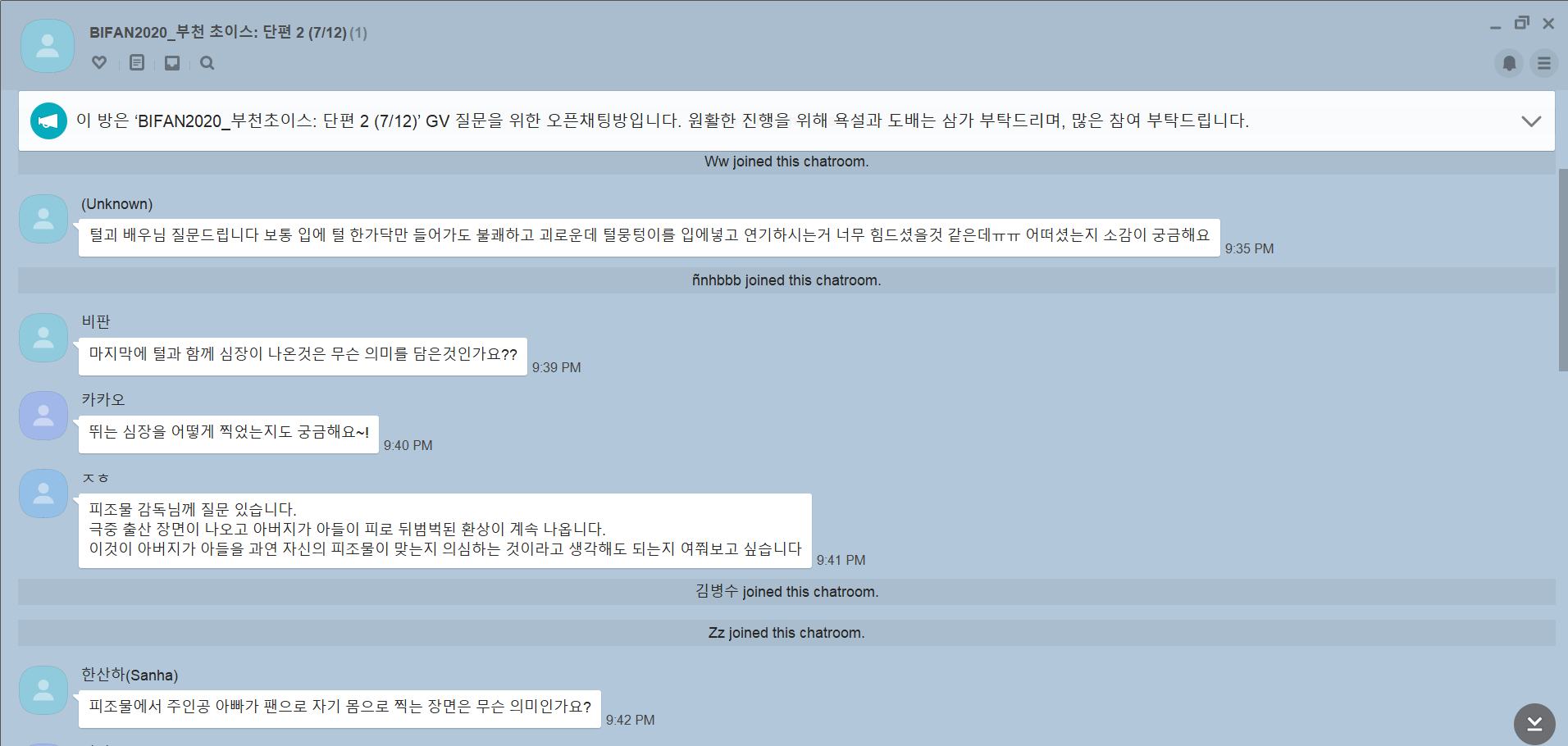
What is it like inside the theatre?
… It works.
If there's anything about BIFAN absolutely shone in, it's in accommodating the in-person film festival experience to the best of its ability. Theaters were disinfected four times a day — that is, after each screening — and people were placed at least two seats apart, as marked by the neon tags on the seats. It was impossible to sit next to, or even behind anyone.
Of course, masks are required during the entirety of the screening. Korean premieres tend to have in-person guests, but international guests — unable to fly — have pre-recorded Q&As that are played and subtitled accordingly after each competition film. While it definitely feels lacking in comparison to a live-streamed alternative, Jin notes it's mostly a theater problem, for the number of potential technical complications and the lack of good WIFI signal (in 5G Korea!).
For the In-person Q&As (that is, with the Korean guests), contact remains minimal. Any speaking member of the cast and crew have to put on latex gloves to hold the mic. To prevent passing the mic around the room, audience members — ingeniously — submit their questions in an open KakaoTalk chat room, identifiable via QR code. The moderators read them up front, and any fans can still line up outside the theater to beget any coveted signatures.
And the parties?
Non-existent, full stop.
Call me biased, but I genuinely think one of the best parts about festivals is the party scene — the friends you find from previous fests, the serendipitous run-ins with directors in the after-hours, the drunken karaoke nights. Unfortunately, due to the crackdown of Gyeonggi province laws, any sanctioned BIFAN party could not go on as planned. Festival attendees (including yours truly) still gathered around open-air meat grills and fried chicken restaurants regardless though, though with a level of social distancing. Though the festival felt more sober overall, the movie magic still lingered.
Bonus question: Is the hybrid fest model sustainable?
Jin thinks that the hybrid format may be tweaked in the future, but its online components be here to stay — at least for BIFAN. “BIFAN is a very tech-oriented, cutting edge film festival,” Jin admitted. “It's actually a coincidence [that the pandemic happened as it did], since BIFAN was already investigating alternative forms of presenting new media.”
Within this shift in screening formats though, there's also a shifted focus of “locality” — in which the city of Bucheon almost seems less of the central focus than the country of S. Korea. Unlike SXSW, online selections were only available to badgeholders with Korean IP addresses; BIFAN in particular took special care to consult Korean IT platforms (like WATCHA and SK Jump) for their virtual components. Their focus is on access at home: in encouraging cinephiles in Korea to participate in the festival in the biggest capacity possible.
Will this lead to two co-organized festivals? I ask. Jin laughs; it depends what everyone else really wants. His eyes twinkle at the possibilities. “After all, this,” he says, gesturing to the subdued crowds of the CGV Sopoong, “is only the beginning.”


